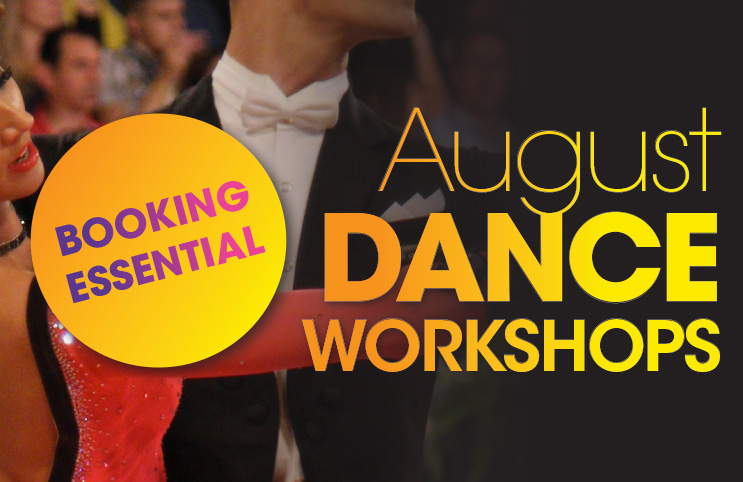WEDNESDAY NIGHTS
ETTILEY HEATH COMMUNITY CHURCH
Beginners/Refresher (Open to everyone) 8pm
Improvers/Intermediates 8.30pm – 9.30pm
 1st August
1st August
CHA CHA CHA Fun Figures for All
In the early 1950s, dance groups performed the danzón-mambo in the dance halls of Havana. Many dancers at these gigs had difficulty with the syncopated rhythms of the danzón-mambo. To make this new dance form more appealing to social dancers, the melody was altered. The first downbeat was stronger and the rhythm now less syncopated. The sound of the ladies shoes and an improvised triple step we know as a “chasse” produced the sound “cha-cha-cha”.
This craze soon spread to Mexico City, and by 1955 the music and dance of the cha cha cha had become popular in Latin America, the United States, and Western Europe, following in the footsteps of the mambo, which had been a worldwide craze a few years earlier.
8th August
BATCHATA & MERENGUE Lively Latin Rhythms
Merengue was made the official dance of the Dominican Republic. The dance originated from the enslaved labourers working in sugar beet fields. These workers were connected to one another by a chain strapped to their ankles and had to walk in such a manner as to drag one leg. Taught in ballroom studios around the world, the Merengue can be seen in other latin dance styles (cha-cha-cha, rumba, mambo and salsa).
Bachata is a style of dance that also originated in the Dominican Republic. The basics to the dance are three-step with a Cuban hip motion, followed by a tap including a hip movement on the 4th beat. The knees should be slightly bent so the performer can sway the hips easier. The movement of the hips is very important because it’s a part of the soul of the dance. Generally, most of the dancer’s movement is in the lower body up to the hips, and the upper body moves much less.
15th August
VIENNESE WALTZ Turning to Tempo
Viennese Waltz, was the first ballroom dance performed in the closed hold. The German, Austrian, and Scandinavian word “Walzer”, also the French “Valse”, or “Vals” (Danish, Norwegian, and Swedish), still implicitly refer to the original fast moving form of the Viennese Waltz and not the English Waltz or Slow Waltz.
Constantly rotating, a true Viennese Waltz consists of Natural and Reverse turns interspersed with change steps to switch the direction of rotation. Couples follow the same counter-clockwise path as each other around the floor without overtaking. Many dancers aspire to include The Fleckerl, however this modern invention is a figure not normally included at the annual balls in Vienna.
22nd August
ARGENTINE TANGO Expression & Music
Argentine tango relies heavily on improvisation and is essentially walking in an embrace with a partner to the music. The hold can vary from very open at arms length, to very closed, in which the connection is chest-to-chest, or anywhere in between.
Dancing appropriately for the emotion and speed of Tango music is extremely important. A good dancer will transmit the feeling of the music to their partner, leading them effectively throughout the dance. Dancers generally keep their feet close to the floor as they walk, the ankles and knees brushing as one leg passes the other.
29th August
KIZOMBA The African Latin Tango
Kizomba is a slow African rhythm dance, with an electronic percussion. It was first described as an African Tango with the feel of blues and Bachata.
Both Kizomba and Tango are characterised as walking dances requiring a close connection. The Tango embrace feels formal with a very strong masculine dominance and feminine submission, whilst Kizomba feels casual with more harmony between two people dancing.
Kizomba has a reputation; it can be a sexy dance. Many online videos feature people pulsating, grinding their pelvis against each other – However, that is not inherent to the original dance developed in Angola in the late 70s. Rumba is the most sexual (competitive) dance by far, yet we do not dance it socially as we should.
